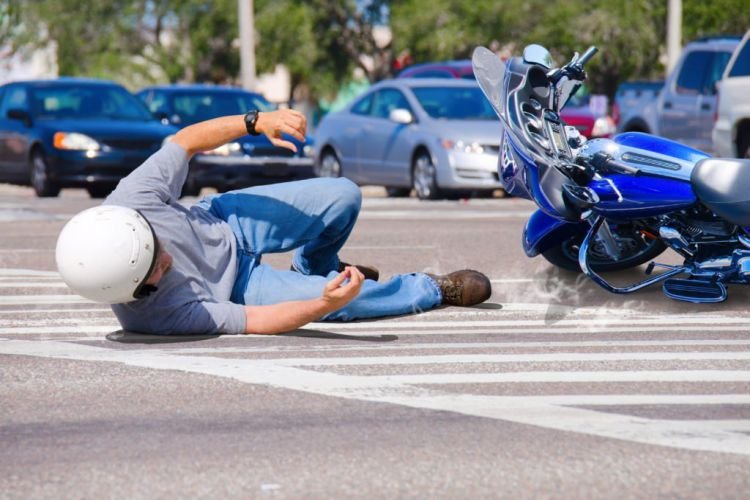 The city of Las Vegas, Nevada, is renowned for its iconic Strip, where dazzling lights and bustling entertainment venues draw visitors from around the world. However, beyond the neon glow of the Strip lies a diverse landscape that motorcyclists traverse daily, from suburban neighborhoods to scenic routes in the surrounding desert. This diversity presents unique challenges and dynamics for riders on the roads.
The city of Las Vegas, Nevada, is renowned for its iconic Strip, where dazzling lights and bustling entertainment venues draw visitors from around the world. However, beyond the neon glow of the Strip lies a diverse landscape that motorcyclists traverse daily, from suburban neighborhoods to scenic routes in the surrounding desert. This diversity presents unique challenges and dynamics for riders on the roads.
We’ll delve into the ever-evolving world of motorcycle accidents in Las Vegas, exploring the distinctive challenges faced by riders as they journey from the heart of the Entertainment Capital to the peaceful suburbs, seeking the expertise of seasoned motorcycle accident attorneys in Las Vegas, Nevada.
Diverse Road Conditions and Traffic Dynamics
Suburban roads in Las Vegas offer a different riding environment, marked by quieter neighborhoods, intersections, and residential areas. As motorcyclists venture beyond the bustling Strip, they encounter specific challenges on these roads, particularly at intersections and within residential zones. Here are some key factors to consider:
- Intersection Hazards: Suburban intersections in Las Vegas are often bustling hubs of activity. These intersections are frequented by both residents and non-residents, leading to a blend of familiar and unfamiliar driving behaviors. Particularly perilous are scenarios where vehicles unexpectedly make left turns in front of motorcyclists or disregard right-of-way rules. Such situations can escalate rapidly, leading to severe collisions. The confluence of different traffic streams at these crossroads necessitates that riders adopt a proactive and defensive stance, always anticipating the unpredictable and preparing for rapid response.
- Residential Driveways: The tranquility of suburban neighborhoods, with their rows of homes and serene ambiance, hides the latent hazard of residential driveways. Vehicles often emerge from these driveways, at times without adequate checks for oncoming traffic. This sporadic and unpredictable movement necessitates that motorcyclists maintain heightened alertness. By anticipating potential exit and entry points and adjusting their speed and positioning accordingly, riders can better navigate this unique suburban challenge.
- Traffic Flow Variability: The ebb and flow of traffic in suburban regions are notably different from the constant hum of city centers. Morning and evening rush hours bring about increased vehicular movement, as residents commute to work or transport children to school. Conversely, weekends in residential areas can witness a more relaxed pace, interspersed with bouts of unpredictable driving. For motorcyclists, understanding and anticipating these variable patterns is vital. Adjusting their riding strategies in response to these shifts ensures they remain safe and in control.
- Road Maintenance: The quality and upkeep of suburban roads can be inconsistent. While main arteries might be well-maintained, side streets or lesser-used roads may present challenges like potholes, cracks, or loose debris. Such irregularities can be especially treacherous for motorcyclists, who rely on stability and grip. Recognizing the potential for inconsistent road conditions and adjusting speed and maneuverability accordingly can be the difference between a safe journey and an unfortunate incident.
- Visibility Concerns: Residential areas come with their own set of visibility challenges. Tall trees, hedges, parked vehicles, or even garden decorations can obscure a rider’s view of the road ahead. Especially at intersections, these obstructions can hide oncoming vehicles or pedestrians. It’s paramount for motorcyclists to approach such potential blind spots with caution, reducing speed, and ensuring they have ample time to react to any unforeseen obstacles or movements.
Challenges on the Strip: Tourists and Nightlife
Navigating the Las Vegas Strip presents a unique challenge for motorcyclists due to the constant influx of tourists and the city’s vibrant nightlife. With sidewalks filled with pedestrians and the Strip’s streets teeming with revelers, riders must remain exceptionally vigilant. Tourists exploring the attractions may suddenly cross the road, and the city’s nightlife can lead to impaired driving, increasing the risk of accidents. Distracted drivers, distracted by the dazzling lights and attractions, further contribute to the complexity of riding on the Strip.
As the sun sets, the Strip comes alive with neon lights, music, and revelry. Bars and nightclubs spill their patrons onto the streets, creating an environment where both drivers and riders need to exercise caution. Impaired driving becomes a concern during these hours, and motorcyclists must be acutely aware of drivers who may have indulged in the city’s offerings. Additionally, the distraction caused by the Strip’s dazzling lights and attractions can divert drivers’ attention from the road, increasing the risk of accidents involving motorcyclists.
Navigating Suburban Roads: Intersections and Residential Areas
Las Vegas, best known for its bustling Strip and the glitz of its downtown area, is surrounded by vast stretches of suburban neighborhoods. These suburban zones present a contrasting landscape, with a rhythm all their own. As motorcyclists leave behind the towering casinos and frenzied foot traffic, they’re met with the quieter, but no less challenging, streets of Las Vegas’s residential zones.
Intersections in these suburban settings become particularly tricky. While the volume of traffic might be less than the central parts of the city, intersections often become areas of heightened risk. Here, vehicles, perhaps driven by someone in a hurry to get home or to run an errand, might make unexpected left turns, not always accounting for a motorcyclist’s right of way. The design of some intersections, combined with distractions both inside and outside vehicles, can lead to drivers failing to yield when they should. For the unsuspecting motorcyclist, these intersections demand heightened alertness and a readiness to react swiftly.
Beyond intersections, the layout of residential areas introduces its own set of challenges. Houses with driveways that directly connect to the main road can be potential points of conflict. A car might suddenly reverse out, or a distracted driver might pull into the driveway without spotting a motorcyclist approaching from behind. The rhythm of suburban life, with children playing, pedestrians, and the occasional pet crossing the road, requires motorcyclists to maintain a moderate speed and stay prepared for unexpected movements.
While the suburbs of Las Vegas might offer a break from the city’s relentless pace, they bring forth their own set of riding challenges. Defensive riding techniques, constant vigilance, and a thorough understanding of suburban traffic dynamics become essential tools for any motorcyclist. Safety in these zones is not just about knowing how to ride; it’s about anticipating and reading the road ahead.




